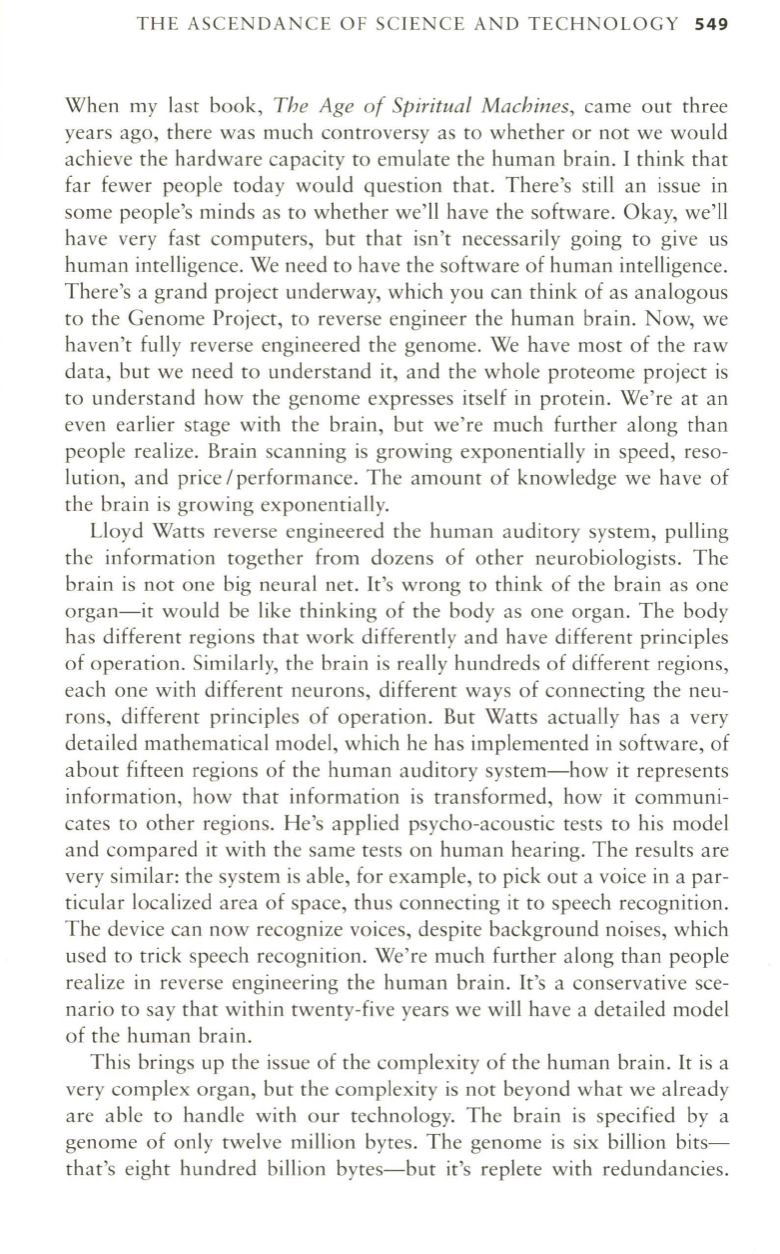
THE ASCENDANCE OF SCIENCE AND TECHNOLOGY
549
When my last book,
The Age of Spiritual Machines,
came out three
years ago, there was much controversy as to whether or not we would
achieve the hardware capacity to emulate the human brain. I think that
far fewer people today would question that. There's still an issue in
some people's minds as to whether we'll have the software. Okay, we'll
have very fast computers, but that isn 't necessarily going to give us
human intelligence. We need to have the software of human intelligence.
There's a grand project underway, which you can think of as analogous
to the Genome Project, to reverse engineer the human brain. Now, we
haven't fully reverse engineered the genome. We have most of the raw
data, but we need to understand it, and the whole proteome project is
to understand how the genome expresses itself in protein. We're at an
even earlier stage with the brain, but we're much further along than
people realize. Brain scanning is growing exponentially in speed, reso–
lution, and price / performance. The amount of knowledge we have of
the brain is growing exponentially.
Lloyd Watts reverse engineered the human auditory system, pulling
the information together from dozens of other neurobiologists. The
brain is not one big neural net. It's wrong to think of the brain as one
organ-it would be like thinking of the body as one organ. The body
has different regions that work differently and have different principles
of operation. Similarly, the brain is really hundreds of different regions,
each one with different neurons, different ways of connecting the neu–
rons, different principles of operation. But Watts actually has a very
detailed mathematical model, which he has implemented in software, of
about fifteen regions of the human auditory system-how it represents
information, how that information is transformed, how it communi–
cates to other regions. He's applied psycho-acoustic tests to his model
and compared it with the same tests on human hearing. The results are
very similar: the system is able, for example, to pick out a voice in a par–
ticular localized area of space, thus connecting it to speech recognition.
The device can now recognize voices, despite background noises, which
used to trick speech recognition. We're much further along than people
realize in reverse engineering the human brain. It's a conservative sce–
nario to say that within twenty-five years we will have a detailed model
of the human brain.
This brings up the issue of the complexity of the human brain. It is a
very complex organ, but the complexity is not beyond what we already
are able to handle with our technology. The brain is specified by a
genome of only twelve million bytes. The genome is six billion bits–
that's eight hundred billion bytes-but it's replete with redundancies.


